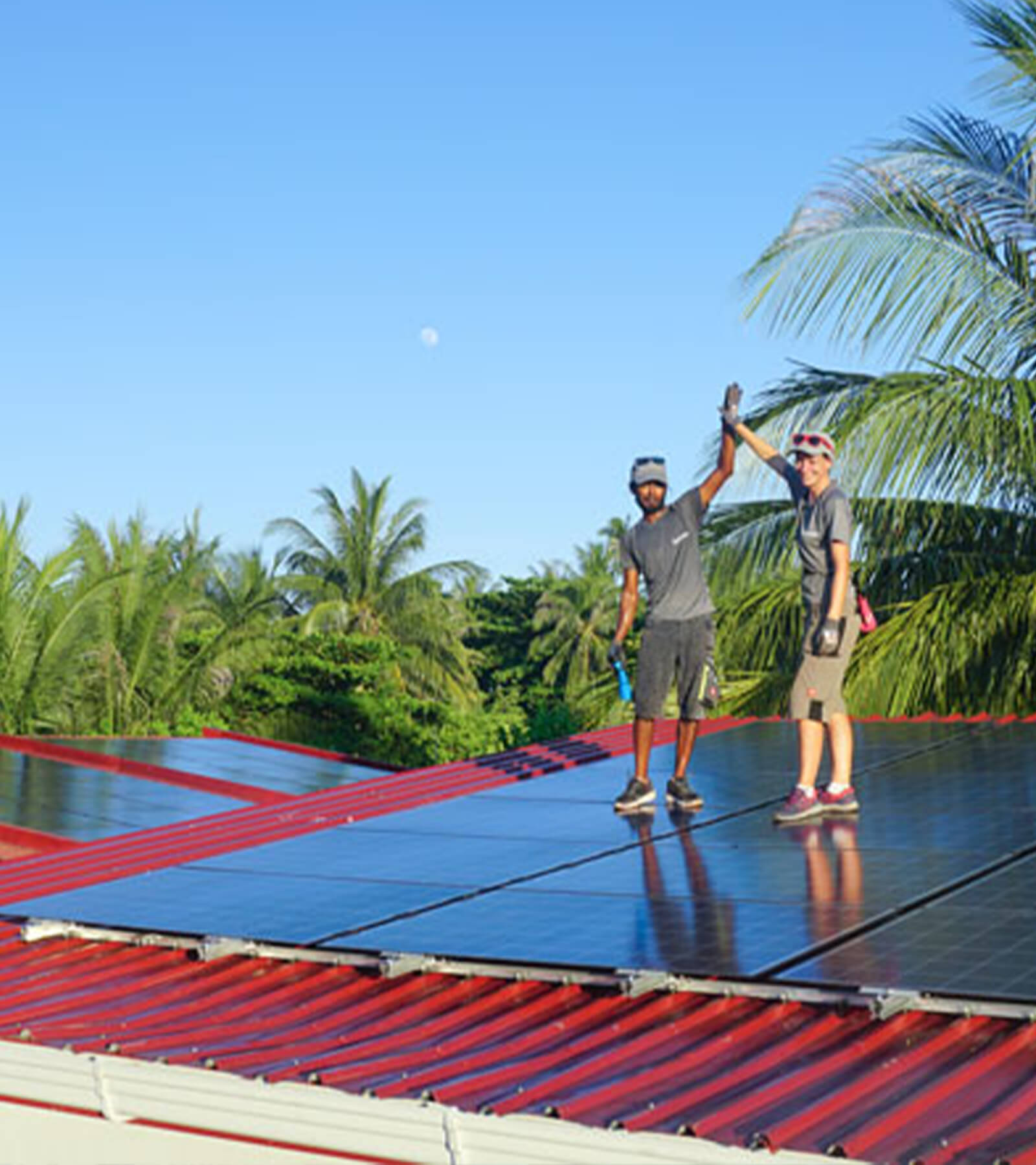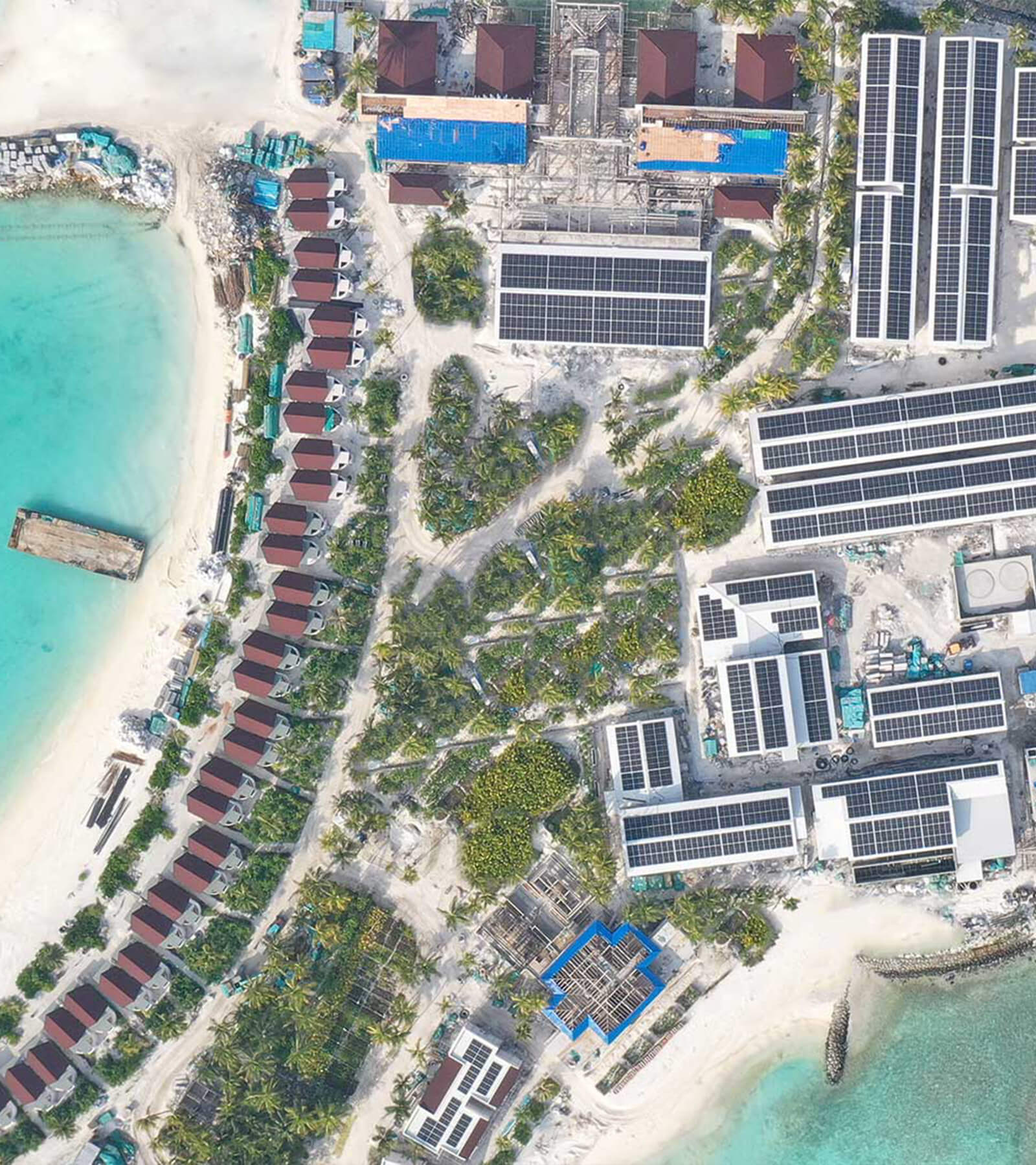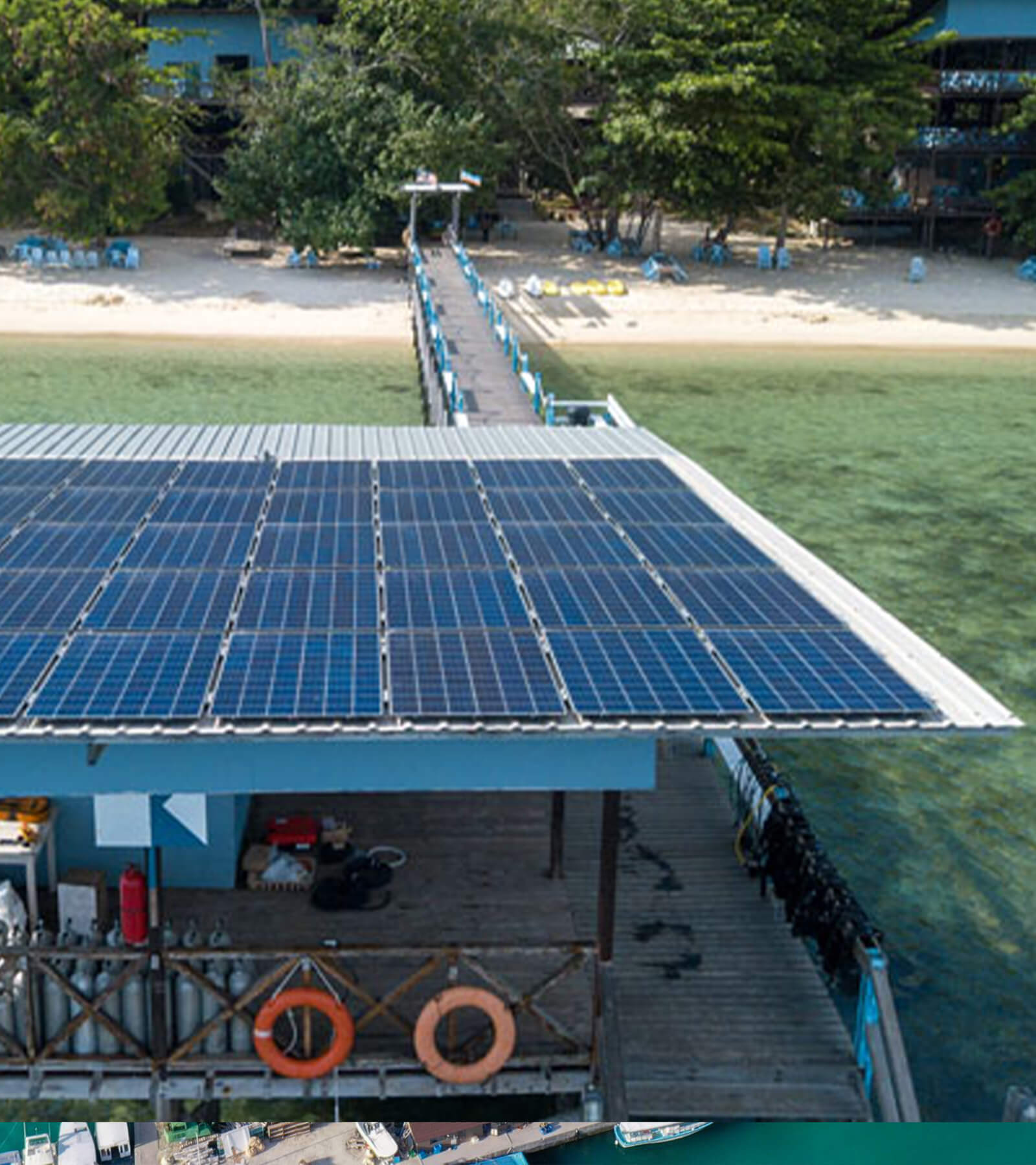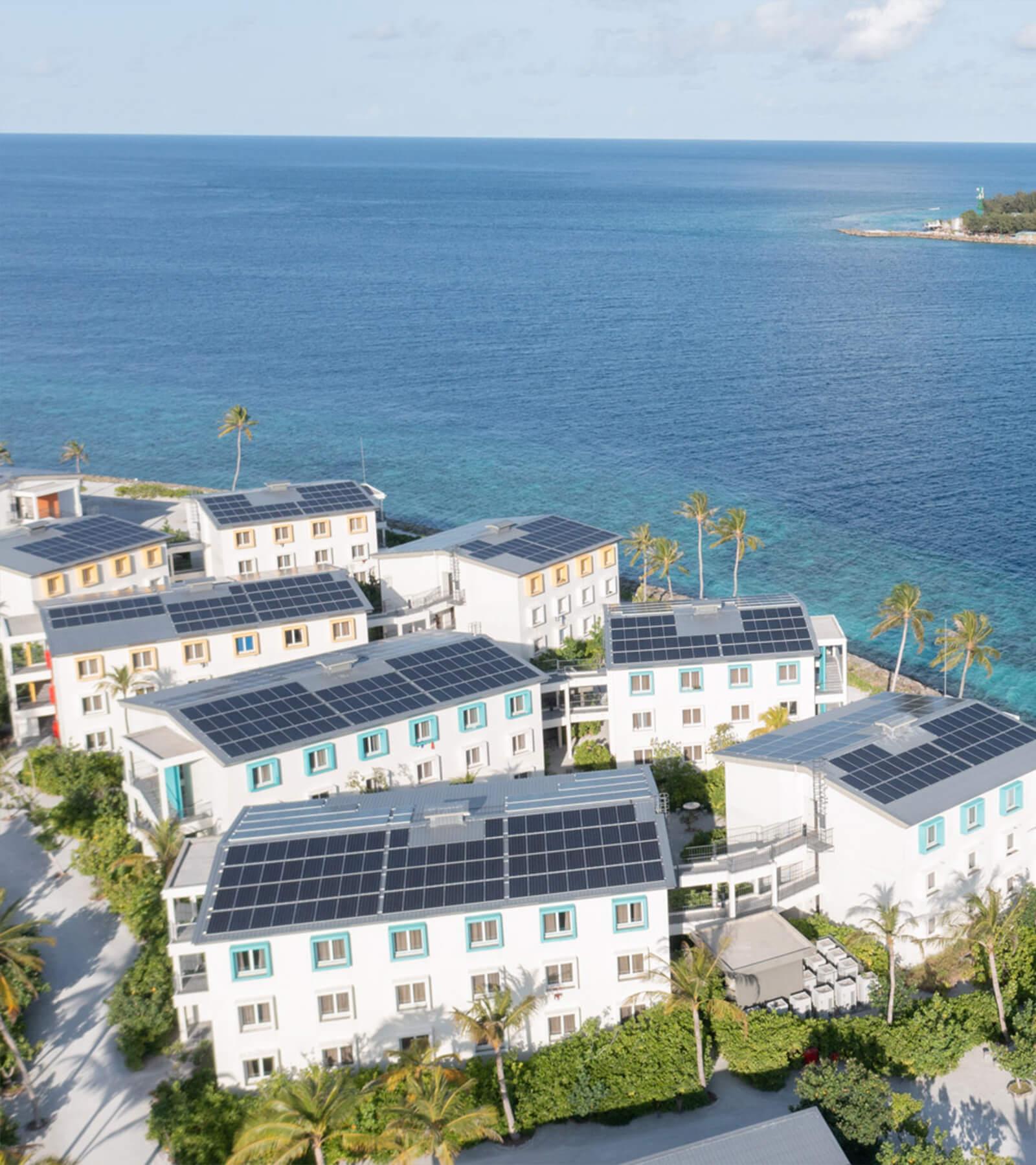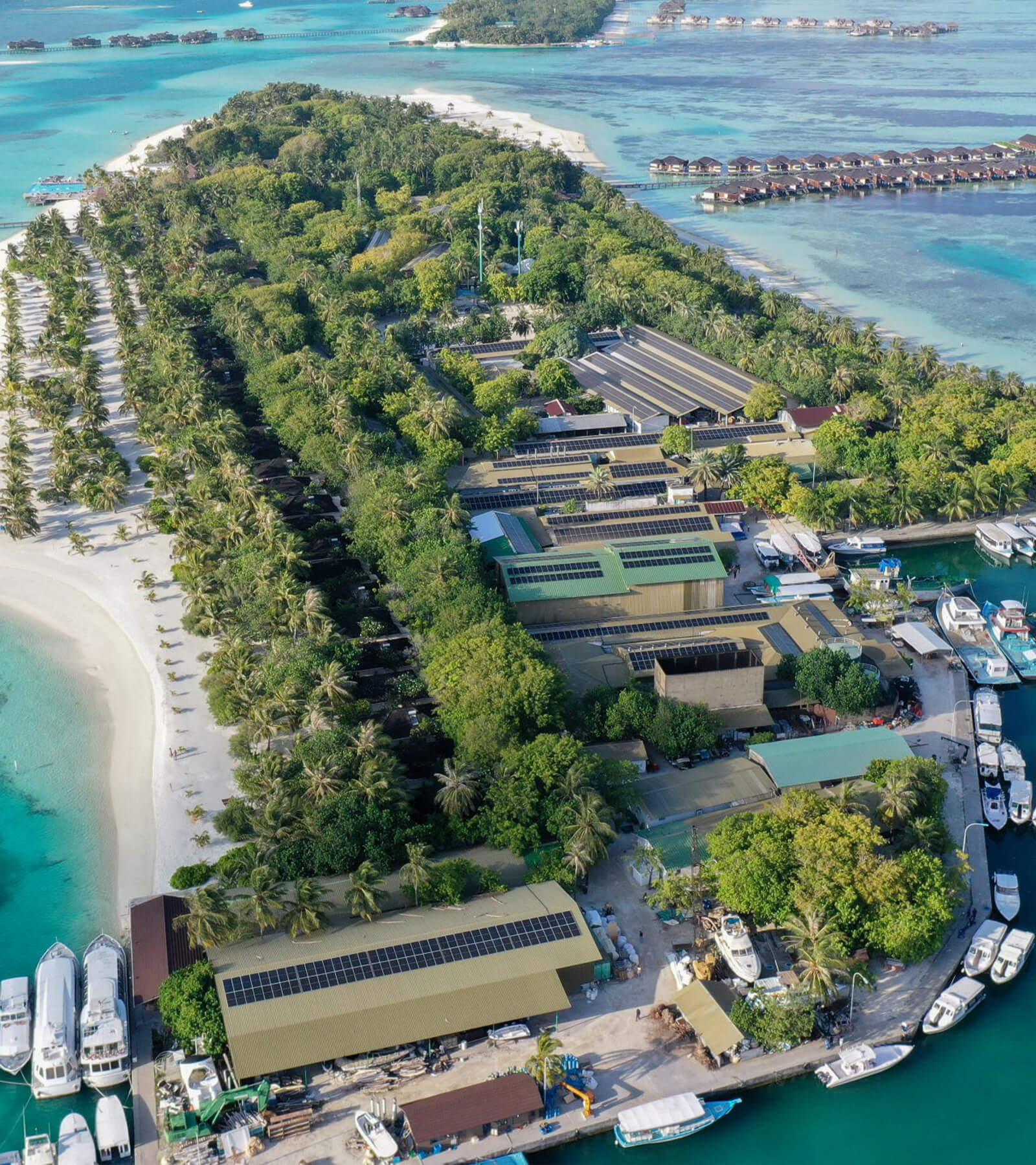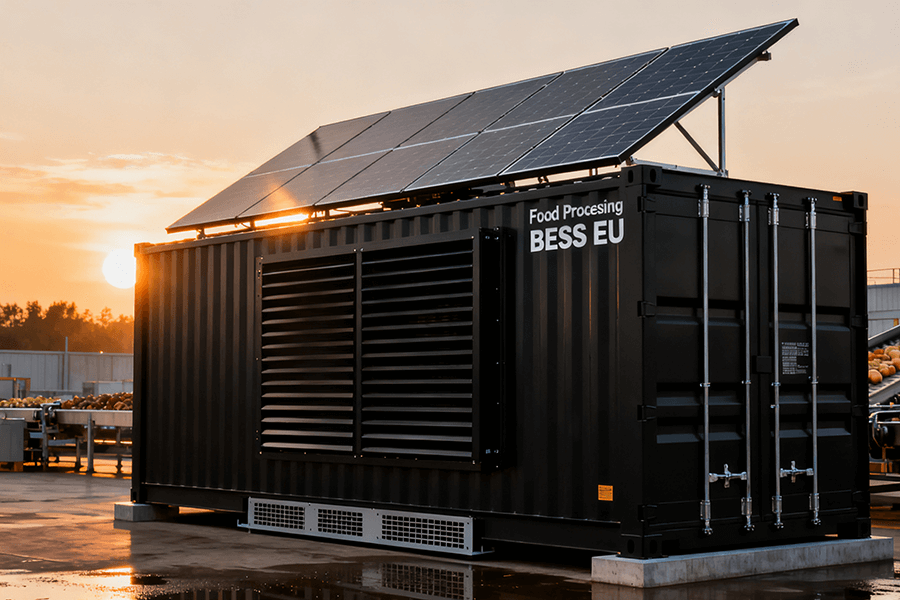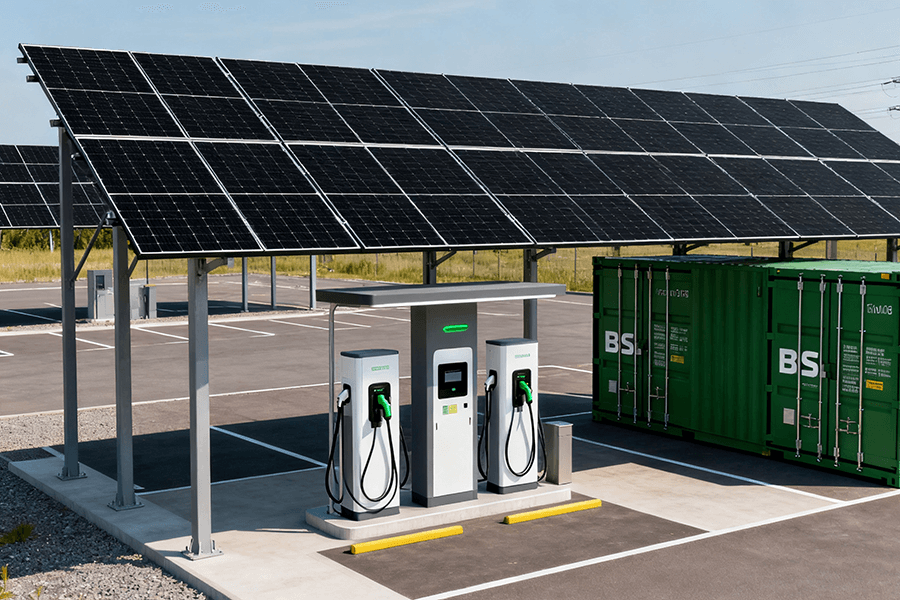
The Rising Tide of Offshore Solar and the Need for BESS
In 2025, the offshore solar industry is experiencing a remarkable boom, and this trend is most evident in Europe. According to the European Commission’s latest report titled Offshore Renewable Energy Strategy 2030 (2025), it projects that the offshore solar capacity in the EU will reach 30 GW by 2030, marking a tenfold increase from the levels in 2023. You can access the report here.
A prime example of this growth is the Netherlands’ ambitious 1.2 GW North Sea project. Scheduled for full operation by 2026, this large-scale endeavor will:
- Cover an area of 12 square kilometers
- Provide power to over 300,000 households annually
This isn’t a minor experiment; it represents a significant stride towards the future of renewable energy. As floating solar farms navigate the waves, ensuring a stable power supply has become an urgent necessity.
Enter the marine-grade BESS container, the often overlooked yet essential component in the offshore energy landscape.
Floating microgrids operate in challenging environments, much like the unpredictable “wild west” of the energy frontier. Situated in the open ocean, they are at the mercy of Mother Nature’s forces, including:
- High winds: Frequently exceeding 100 km/h during winter months
- Salty sea spray: With chloride concentrations reaching up to 35,000 ppm
- Large waves: Reaching heights of 8 meters in the North Sea
These harsh conditions can severely disrupt power systems. This is where the saltwater-resistant BESS container proves invaluable. Functioning as a safeguard, it ensures the smooth operation of microgrids. Without it, the goal of a stable, renewable energy supply from offshore solar and wind could quickly unravel, leading to blackouts and inefficiencies. A 2024 study by the International Renewable Energy Agency (IRENA) titled Offshore Energy Storage Systems revealed that unprotected energy storage systems in marine environments have a failure rate 3.5 times higher than those equipped with marine-grade protection. You can find the study here.
The Marvels of Marine-Grade BESS Containers
Built to Last: Corrosion-Resistant Materials
In the unforgiving expanse of the marine environment, the integrity of a Battery Energy Storage System (BESS) container is not just a matter of durability—it’s a critical determinant of operational reliability. To withstand the relentless assault of saltwater, humidity, and UV radiation, the marine-grade BESS container is engineered with meticulous attention to material science.
Material Science: The Foundation of Resilience
At the heart of its resilience lies 316L stainless steel, a material renowned for its exceptional resistance to corrosion. Unlike standard steels, 316L contains 2-3% molybdenum, a game-changer in chloride-rich environments. This alloying element forms a passive oxide layer on the steel surface, effectively repelling the aggressive penetration of salt ions.
Corrosion Resistance Comparison
Comparative data from the American Society for Testing and Materials (ASTM) underscores its superiority:
| Stainless Steel Type | Corrosion Rate in Seawater (mm/year) |
|---|---|
| Standard 304 | 0.5 |
| 316L | < 0.1 |
As per ASTM G102 (2023), this translates to a lifespan up to five times longer in marine conditions, safeguarding the container’s structural integrity for decades.
Protection Standards: IP68 Certification
But material strength is only half the battle. The container’s IP68 rating—a stringent international standard defined by the International Electrotechnical Commission (IEC 60529, 2022)—ensures impenetrable protection against both dust and water. This certification isn’t just theoretical; it’s backed by rigorous testing protocols.
- Dust Protection: The “6” in IP68 indicates complete protection against dust ingress.
- Water Protection: The “8” certifies that an IP68 container can endure full submersion at 1.5 meters for 30 minutes without any water ingress, providing an airtight shield for the high-voltage batteries and complex power conversion systems within.
To visualize the difference, consider the following comparison:
| Protection Level | IP Rating | Key Features |
|---|---|---|
| Dust-tight | 6 | Complete protection against dust intrusion |
| Immersion-proof | 8 | Submersible up to 1.5m for 30 minutes without leakage |
Riding the Waves: Wave and Vibration Tolerance
The ocean is a dynamic arena, where every wave generates forces equivalent to heavy machinery in motion. A marine-grade BESS container must not only endure these mechanical stresses but also safeguard the delicate electronics inside. This challenge is met through compliance with DNV-ST-0126, a comprehensive standard developed by DNV GL, a world leader in maritime classification.
DNV-ST-0126 subjects containers to a battery of tests simulating extreme offshore conditions:
- Vertical Acceleration: Up to 3g forces, mimicking the impact of large waves crashing against a vessel.
- Horizontal Acceleration: Peaks of 2g, replicating lateral movements during storms.
- Vibration Testing: Frequencies spanning 1-100 Hz, covering the full spectrum of operational vibrations.
The importance of this standard is underscored by real-world data. A DNV GL case study (2024) revealed that containers compliant with DNV-ST-0126 experienced a staggering 90% reduction in failure rates due to wave and vibration stress over a five-year period, compared to non-compliant models. This resilience is achieved through a combination of reinforced structural design, shock-absorbing mounts, and vibration-dampening materials, ensuring that the energy storage system remains operational even in the most turbulent seas.
In essence, the marine-grade BESS container isn’t just a housing—it’s a technological marvel engineered to thrive in one of the harshest environments on earth, enabling reliable energy storage for the future of offshore renewable grids.
Powering Up: Integration with Offshore Solar Arrays
A Match Made in Heaven: 1–5 MW Offshore Solar Arrays
The symbiotic relationship between marine-grade Battery Energy Storage System (BESS) containers and offshore solar arrays represents a technological breakthrough in sustainable energy. In contemporary projects, these BESS containers are typically paired with 1–5 MW offshore solar arrays, creating a resilient energy ecosystem.
Energy Generation and Storage Dynamics
During daylight hours, the photovoltaic panels efficiently capture solar irradiance, converting it into electrical energy. However, the intermittent nature of solar power—exacerbated by cloud cover, seasonal changes, and nighttime—poses a significant challenge to consistent energy supply.
BESS Containers: The Energy Buffer Solution
This is where the BESS container assumes a critical role. Functioning as an intelligent energy buffer, it stores surplus electricity generated during peak solar production. Advanced control algorithms within the BESS optimize charging and discharging cycles, ensuring maximum efficiency. When solar output diminishes, the stored energy is seamlessly released, maintaining a stable power supply.
Case Study: Baltic Sea Offshore Solar Project
For example, in a 2 MW offshore solar project in the Baltic Sea operated by a German energy company, a 1 MWh marine-grade BESS container was deployed in 2023. Independent monitoring by the German Energy Agency (dena) revealed that this integration reduced frequency deviations from the standard 50 Hz grid by 40%, significantly enhancing grid stability.
| Performance Metric | Pre-BESS Installation | Post-BESS Installation |
|---|---|---|
| Frequency Deviation | 0.3 Hz | 0.18 Hz |
| Power Reliability | 85% | 95% |
Weathering the Storm: 4-Hour Backup
The harsh marine environment presents unique operational challenges, especially during severe weather events.
- Wind Turbines: Storms and high winds often require wind turbines to be shut down for safety reasons.
- Solar Arrays: Heavy cloud cover renders solar arrays ineffective.
During these critical periods, BESS containers act as a reliable power lifeline, providing up to 4 hours of continuous backup power.
In offshore oil rigs and renewable energy platforms, maintaining power to essential systems is crucial:
- Navigation Lights: Ensuring visibility for maritime vessels.
- Communication Networks: Vital for coordinating operations and emergency response.
- Life Support Equipment: Necessary for safeguarding the lives of personnel on board.
Data from the Offshore Renewable Energy Catapult illustrates the BESS container’s effectiveness in supporting these critical loads. Their research shows that installations with BESS backup experienced a 70% reduction in operational disruptions during storms compared to those without such systems. This enhanced resilience not only protects personnel and equipment but also improves the overall economic viability of offshore operations.
Certification and Funding: The Keys to Success
Navigating the Certification Maze
Securing approval for a marine-grade Battery Energy Storage System (BESS) container to operate in offshore environments is a complex and rigorous process. This challenge is primarily due to the extreme conditions these containers must endure, including high salinity, corrosive sea spray, and turbulent weather patterns. Among the numerous certifications required, the ABS Marine Loadline approval stands out as a cornerstone for project viability.
The American Bureau of Shipping (ABS), a globally recognized authority in maritime safety, enforces stringent criteria for marine equipment. Passing the ABS loadline approval necessitates comprehensive testing across multiple dimensions:
- Buoyancy Testing: Ensuring the container can maintain stability and floatation under various loading scenarios.
- Structural Integrity Assessment: Subjecting the container to simulated heavy loads, vibrations, and dynamic forces to verify its durability.
- Regulatory Compliance: Confirming alignment with international maritime standards, such as the International Convention for the Safety of Life at Sea (SOLAS) and the International Maritime Organization (IMO) guidelines.
This certification serves as a gold standard in the industry. It not only instills confidence in operators regarding the container’s reliability in harsh offshore conditions but also unlocks access to a broader range of projects. As of 2025, over 80% of EU offshore energy storage contracts mandate ABS certification, according to ABS, 2025. For instance, projects in the North Sea and the Baltic Sea regions explicitly require this accreditation to safeguard investments and ensure environmental safety.
Tapping into the EU’s Offshore Renewable Energy (ORE) Fund
The European Union is actively driving the transition to clean energy through its Offshore Renewable Energy (ORE) Fund, a strategic initiative aimed at accelerating the deployment of offshore wind and solar technologies. With a substantial budget of €10 billion allocated from 2021 to 2030, the fund provides crucial financial support to innovative projects that align with the EU’s climate goals.
Marine-grade BESS containers meeting specific eligibility criteria can access significant funding from the ORE Fund. The support structure includes:
| Funding Criteria | Details |
|---|---|
| Cost Coverage | Up to 40% of project costs, depending on technological innovation and environmental impact |
| Eligible Expenses | Research & development, installation, maintenance, and operational costs |
| Success Stories | A 2024 Portuguese project received €2.5 million to deploy BESS containers in a 3 MW offshore solar farm, as reported by ORE Fund, 2024 |
This financial injection serves as a catalyst for the industry, enabling companies to overcome high upfront costs and scale up their operations. By leveraging the ORE Fund, stakeholders can accelerate the integration of BESS containers into offshore microgrids, bringing the EU closer to its ambitious targets of achieving 45% renewable energy consumption by 2030.
Maxbo Solar: Your Partner in Offshore Energy Solutions
At Maxbo Solar, we’re not just another player in the game; we’re the superheroes of the offshore energy world. With our state-of-the-art marine-grade BESS containers, we’re leading the charge in powering EU’s offshore solar and wind microgrids.
Unrivaled Durability & Performance
Our BESS containers are battle-tested, boasting an impressive 2025 track record:
- Zero corrosion failures across 21 deployments
- Plug-and-play design: Pre-assembled skids that bolt directly to gensets
- Rapid integration: Proven by Typhoon Jelawat (South China Sea, 2024), where our container was operational within 60 hours of arrival—even in extreme weather conditions.
Intelligent Remote Monitoring
We offer Remote IQ, a cutting-edge monitoring solution that allows you to:
- Track voltage, state of charge (SoC), and genset health from your office
- Receive predictive alerts 48 hours before potential failures
- Achieve an industry-leading 98.5% system uptime, verified by Lloyd’s Register in 2025 [Lloyd’s Register, 2025]
-
- Thanks to over 12,000 sensors per container
Global Deployments & Tangible Results
Our containers are making waves across the globe:
- North Sea: Deployed on 12 platforms
- Southeast Asia: Installed on 9 vessels
These deployments have yielded significant benefits:
- Fuel savings: Average 34% diesel reduction
-
- Equivalent to €150,000 in annual savings per MW of installed capacity
- Regulatory compliance: 100% compliant with IMO 2025 standards since our first installation
- Insurance advantage: 22% lower premiums, according to Allianz data [Allianz, 2025]
| Feature | Maxbo Solar Marine-Grade BESS Container | Industry Average |
|---|---|---|
| Corrosion Failure Rate (2025) | 0% across 21 deployments | 8% |
| Integration Time | <72 hours | 5-7 days |
| System Uptime | 98.5% | 92% |
| Diesel Savings | 34% | 22% |
| Insurance Premiums | 22% lower | Standard |
So, if you’re looking for a reliable, efficient, and innovative partner for your offshore energy needs, look no further than Maxbo Solar. Visit us at www.maxbo-solar.com and let’s power the future together.

